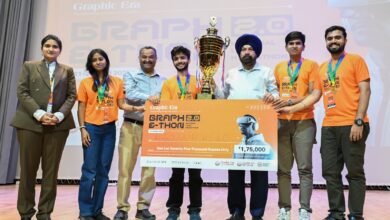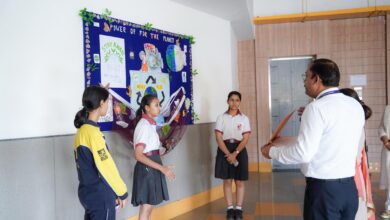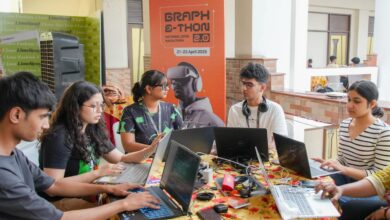Is Modi losing his charm with women voters?

Is Modi losing his charm with women voters?
By Rashme Sehgal
New Delhi, Dec 14
Is Prime Minister Narendra Modi losing his charm with women voters? Has the unprecedented price rise in food and commodity prices and rising unemployment levels both in urban and rural India created a situation where distressed women voters no longer feel Modi will `look after their interests’.
Poll stats show that traditionally BJP had suffered from a gender disadvantage and between 1996 to 2014, more women had voted for the Congress than the BJP. All that changed with the arrival of Modi as Prime Minister. Modi built up an image of an `alpha male’ who could set things right with women based development strategies and this paid him rich dividends.
During the 2019 elections, more women voted for the BJP than any other political party. The recent elections in Gujarat and Himachal Pradesh seem to be a pointer in the opposite direction.
Data collated by the post poll survey of Lokniti-CSDS shows that in Himachal Pradesh the women vote played a key role in propelling the Congress to victory. The women vote played a crucial role given that the vote percentage between the two parties was less than once per cent so this marginal shift ensured the Congress romp to power.
These statistics make for fascinating reading. The BJP in HP saw a five percentage point decline in male voters but it saw a six percentage point decline among women voters. On the other hand, and this is crucial, while the Congress saw a one percentage point increase in its share of male voters, it witnessed a four percentage point rise in its share of women voters.
Himachal Pradesh has 27.46 lakh women voers from which 21.01 lakh voters exercised their franchise in 2022. The figure for the men voters was 20.20 lakh. Almost 75.5 per cent of the population voted this time around.
This is a much higher figure than the women voter turnout in Gujarat which was 61.6 per cent for women while for men it was 66.7 per cent. Women participation in Gujarat has dipped by more than 4 per cent from 66.17 per cent in 2017 and even in the Lok Sabha elections in 2019, it was
69.5 per cent. The Congress-NCP alliance received three per cent more support among women than among men even though overall this alliance saw a considerable decline in the vote share since 2017. Overall, the BJP amassed this huge victory by a three per cent increase in their vote share from 2017.
Till 1 pm, in the second phase of Gujarat elections, only 34.74 per cent of voters had cast their vote. A last minute surge in voting in the 93 constituencies that went to the polls in the second stage saw the voting go up to almost 59 per cent.
While there is little doubt that Modi has assiduously cultivated women voters, no attempt has been made by any of these three political parties namely the BJP, Congress and AAP who contested these assembly elections to field more women in politics at either the assembly or at the parliamentary level.
Women remained a marginalized factor in the ongoing Gujarat elections. A total of 38 women candidates were fielded by all three political parties namely 17 from the BJP, 14 from the Congress and 7 from AAP. From these 15 women candidates emerged as winners, with 14 belonging to the BJP.
So, a party whose leaders are often in the news for their misogynistic remarks against women and had no hesitation in garlanding convicted rapists and murderers in the infamous Bilkis Bano case when released from jail showed no hesitation if giving a ticket to the daughter of one of these rapists can now boast of having elected the maximum number of women to the assembly largely because of brand Modi.
The situation in HP is no better. The state can boast of the second highest women literacy rate in the country but it has a negligible presence in terms of women power at the assembly level. In Himachal, the BJP gave tickets to six women candidates in a legislature of 68 members. By contrast, the Congress nominated only three women candidates.
Politics in both these states epitomizes patriarchal values and it was not surprising that in Himachal, a state dominated by the Rajput and Brahmin communities, only one woman managed to win in these recent elections. Here again it was a BJP candidate Reena Kashyap who emerged as a winner defeating her Congress rival Dayal Pyaari form Pahhad which is an SC seat.
So while, there is 50 per cent reservation for women at the panchayat level, women become a marginalized factor when we reach the assembly and parliament level. Men do not want to cede power, nor are political parties willing to lend their support in getting women elected to positions of power. And yet all the focus in terms of offering freebies continues to be directed towards the women voters. The Congress in HP had offered every family free medical treatment up to Rs 10 lakh, Rs 25,000 to all pregnant women, free electricity up to 300 units, free LPG cylinders for poor women and free bicycles and scooters for girl students.
The BJP and Modi had spoken out against the `revadi’ culture. Finding themselves in an awkward position, they opted to offer `pucca’ houses as part of their infrastructural push as also free educations for girls under the government’s educational thrust as also two free cylinders for women under the PM Ujjawala scheme.
In Gujarat, both the Congress and AAP offered a host of promises from free power, free education, free health care, subsidized cylinders, old pension scheme and farm debt waiver. The BJP also offered free education even though it is well known that they have steadily privatized primary education and have closed down over 600 government schools forcing a large number of girls from poorer homes to opt out of receiving any education.
Modi’s charisma may be fading with the women voters but the coming state elections in 2023 especially in Madhya Pradesh and Karnataka will show just how much his appeal has declined if at all.
( Rashme Sehgal is an independent senior journalist.)




